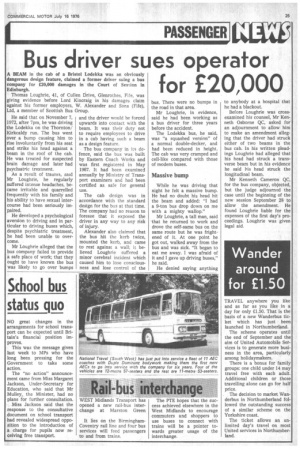for £20,000
Page 27

If you've noticed an error in this article please click here to report it so we can fix it.
bus. There were no bumps in the road in that area.
Mr Loughrie, in evidence, said he had been working as a bus driver. for three years before the accident.
The Lodekka bus, he said, was "a squashed version" of a normal double-decker, and had been reduced in height. The cab was very cramped and cell-like compared with those of modern buses.
Massive bump
While he was driving that night he felt a massive bump. He had no doubt his head hit the beam and added: "I had a 9-ton bus drop down on me with a mighty wallop."
Mr Loughrie, a tall man, said • that he returned to work and drove the self-same bus on the same route but he was frightened of it. At one point he got out, walked away from the bus and was sick. "It began to eat me away. I was afraid of it and I gave up driving buses," he said.
He denied saying anything to anybody at a hospital that he had a blackout.
Before Loughrie was crossexamined his counsel, Mr Kenneth Osborne QC, asked for an adjournment to allow him to make an amendment alleging that the driver had struck either of two beams in the bus cab. In his written pleadings Loughrie had alleged that his head had struck a transverse beam but in his evidence he said his head struck the longitudinal beam.
Mr Kenneth Cameron QC, for the bus company, objected, but the judge adjourned the case until the beginning of the new session September 28 to allow the amendment. He found Loughrie liable for the expenses of the first day's proceedings. Loughrie was given legal aid.




































































































